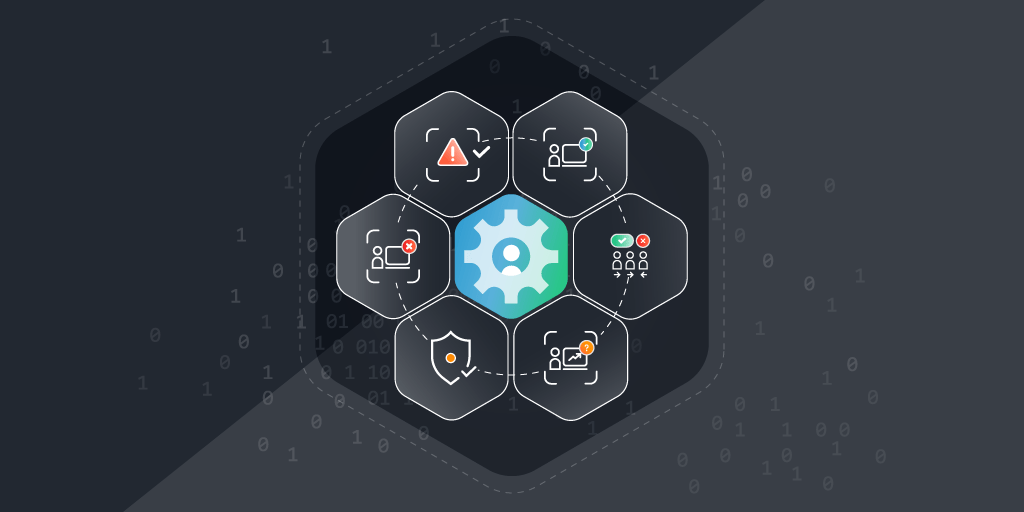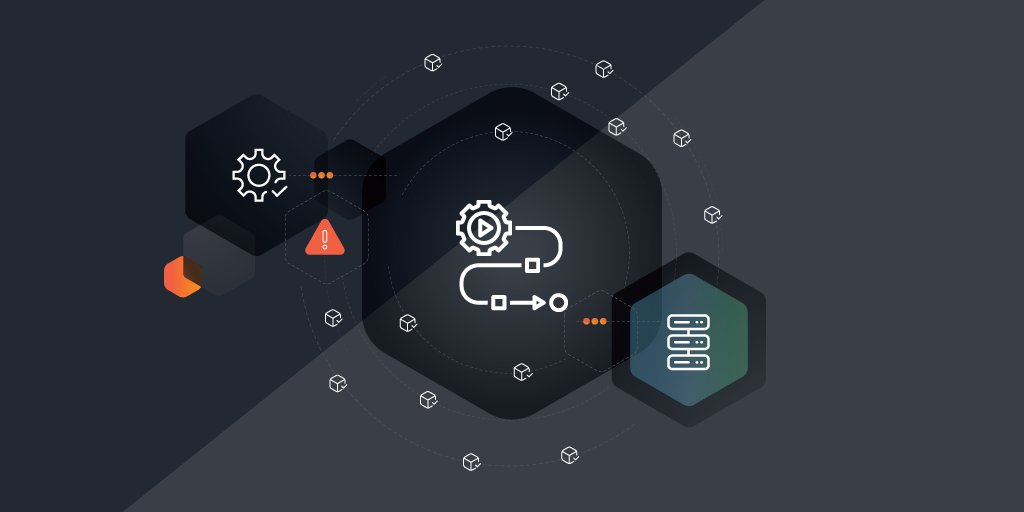
Effective Identity and Access Management (IAM) is crucial for maintaining the security and efficiency of IT operations. By implementing advanced IAM strategies and solutions, organizations can enhance their security posture, improve operational efficiency, and achieve robust compliance with industry standards.
This guide explores the key components of IAM and its benefits, and best practices for planning and implementing an effective IAM strategy to support your organization’s security and compliance goals.
What Is IAM?
Identity and Access Management (IAM) is a framework of policies and technologies that ensures the right individuals have access to the right resources at the right times for the right reasons. It involves the management of user identities and their permissions to access specific systems and data within an organization.
IAM encompasses processes, policies, and technologies that help organizations secure and manage user identities and permissions.
Why is IAM Important for Cybersecurity?
IAM is crucial for cybersecurity because it:
- Enhances Security: By ensuring only authorized users have access to critical systems and data, IAM reduces the risk of unauthorized access and data breaches.
- Improves Compliance: IAM helps organizations comply with regulatory requirements by managing and auditing access to sensitive information.
- Reduces Insider Threats: By monitoring and controlling internal access, IAM minimizes the risk of malicious or accidental actions by employees.
- Streamlines User Management: IAM automates user provisioning and de-provisioning, ensuring that access is granted appropriately and promptly revoked when no longer needed.
- Supports Zero Trust Security: IAM is a core component of the Zero Trust security model, which requires continuous verification of user identities and access permissions.
What Are the Four Components of IAM?
The four primary components of Identity and Access Management (IAM) are:
- Identity Governance: Identity governance involves policies and processes for managing the lifecycle of digital identities within an organization. This includes user provisioning and deprovisioning, which ensures that new users are given appropriate access rights when they join the organization and that these rights are revoked promptly when they leave. Identity governance helps maintain control over who has access to what, ensuring that access rights are appropriate and reviewed regularly to comply with organizational and regulatory requirements.
- Authentication and Authorization: Authentication is the process of verifying the identity of a user attempting to access a system or resource, typically through passwords, biometrics, tokens, or MFA. Authorization determines what authenticated users are allowed to do by defining their access rights and permissions. Together, authentication and authorization ensure that only legitimate users can access systems and data, and that they can only perform actions or access resources that they are permitted to, thereby protecting against unauthorized access and potential breaches.
- Role-Based Access Control (RBAC): RBAC is a method of regulating access to computer or network resources based on the roles of individual users within an organization. Roles are defined according to job functions, and access permissions are assigned to these roles rather than to individual users. This approach simplifies the management of user permissions, ensures that users can access only the resources necessary for their roles, and prevents users from accessing sensitive information or performing actions that they are not authorized to.
- Access Management: Access management involves controlling and monitoring user access to resources and systems based on policies and roles. This component includes mechanisms such as SSO and access control policies to dynamically manage access in real-time. Access management provides visibility into who is accessing what resources, ensures that access is granted and revoked appropriately, and enables quick response to potential security threats, thereby enhancing security and ensuring compliance.
What Are the Benefits of IAM?
Organizations can use IAM to enhance their security posture, simplify user access management, and ensure compliance with regulatory requirements, ultimately leading to a more secure and efficient IT environment.
Enhanced Security and Data Protection
IAM systems significantly improve security by ensuring that only authorized individuals have access to sensitive data and critical systems. Through robust authentication mechanisms such as multi-factor authentication (MFA) and strict authorization policies, IAM helps prevent unauthorized access and reduces the risk of data breaches. Additionally, continuous monitoring and regular audits help identify and address potential vulnerabilities, ensuring that data remains secure and protected.
Streamlined User Access Management
IAM simplifies the process of managing user access across an organization. By automating user provisioning and deprovisioning, IAM ensures that employees have the appropriate access rights when they join the organization and that these rights are promptly revoked when they leave. Role-based access control (RBAC) further streamlines this process by assigning permissions based on job functions, reducing the complexity of managing individual user permissions and improving overall efficiency.
Improved Compliance with Regulations
IAM helps organizations comply with various regulatory requirements by providing detailed records of user access and activity. This visibility into who accessed what and when aids in demonstrating compliance with standards such as GDPR, HIPAA, and SOX. IAM systems can generate comprehensive reports that support audits and compliance reviews, ensuring that the organization adheres to legal and regulatory requirements and avoids costly fines and penalties.
Planning and Implementing an IAM Strategy
Planning an IAM strategy starts with understanding your organization’s unique needs and goals. Choosing the right IAM tools is critical. Look for solutions that offer MFA, SSO and RBAC, and evaluate how well they integrate with your IT setup. Ensure they can scale with your organization and provide strong reporting and auditing capabilities to meet compliance and enhance security.
For effective IAM implementation, follow best practices. Start with a phased approach, focus on critical systems first, and expand controls gradually. Involve different departments, conduct regular user training on IAM policies, and emphasize strong password practices.
Continuous monitoring and regular audits are essential to identify and address vulnerabilities, keeping your IAM system effective and up-to-date. This approach boosts security, streamlines operations and supports compliance efforts.
IAM and Cloud Computing
Cloud settings present unique challenges, requiring robust IAM policies. Organizations must understand access needs and establish strict controls. Additionally, adopting a zero-trust security model enhances protection by continuously verifying identities and permissions.
Effective IAM integration with cloud service providers involves choosing compatible solutions. While native IAM tools are available, third-party solutions often offer more control, supporting seamless user provisioning and consistent access policies. Identity federation simplifies management by allowing access to multiple services with one set of credentials.
Managing cloud IAM’s complexity and scale is challenging. Adopting centralized IAM solutions ensures consistent policies across platforms. Compliance is maintained through robust auditing and reporting, while security risks are minimized by updating IAM policies, conducting frequent audits, and using measures like MFA and encryption. Understanding these considerations ensures robust and efficient IAM in cloud environments.
IAM and Compliance
Effective IAM systems are essential for compliance with various standards and regulations, providing the necessary controls and transparency. Let’s take a closer look.
IAM’s Role in Meeting Regulatory Requirements
IAM systems enforce strict access controls, ensuring that only authorized individuals can access sensitive data and systems. This is vital for compliance with regulations like HIPAA, SOX, and PCI-DSS. MFA and SSO help verify user identities, providing an additional layer of security required by many regulatory frameworks. IAM also enables the implementation and enforcement of security policies that comply with regulatory standards, ensuring consistent application across the organization.
Auditing and Reporting Capabilities of IAM
IAM systems generate detailed logs of user activities, providing a comprehensive record of who accessed what and when. This is essential for compliance audits and investigations. Pre-built and customizable reports help organizations demonstrate compliance with regulatory requirements by showing evidence of access controls, user activities, and policy enforcement. What’s more, continuous monitoring of user activities and access patterns allows organizations to quickly identify and address potential compliance issues.
Ensuring Data Privacy and GDPR Compliance
IAM systems ensure that users have access only to the data they need for their roles, supporting the principle of data minimization under GDPR. They can help manage and track user consent for data processing activities, ensuring compliance with GDPR’s consent requirements, and they facilitate compliance with GDPR’s data subject rights by providing mechanisms for users to access their data and request erasure if necessary.
IAM also supports the use of encryption and anonymization techniques to protect personal data, further ensuring compliance with GDPR’s data protection requirements.
Lansweeper and Your IAM Strategy
By automatically discovering and inventorying all devices and software across your network, Lansweeper provides a detailed and accurate view of your IT environment, ensuring that all assets are accounted for and properly managed. It provides continuous monitoring of user activities and access patterns, generating detailed logs and reports for continuous visibility into unauthorized access and potential security threats. Lansweeper’s comprehensive reporting capabilities facilitate compliance with various regulatory requirements, as well, by providing evidence of access controls and user activity.
Lansweeper augments IAM tools and technologies to enhance your overall IAM strategy. Together these solutions enable organizations to implement a robust IAM framework, improving security, operational efficiency, and regulatory compliance.
Learn more about how Lansweeper can strengthen your IAM strategy, enhance security, and streamline compliance in your organization.


